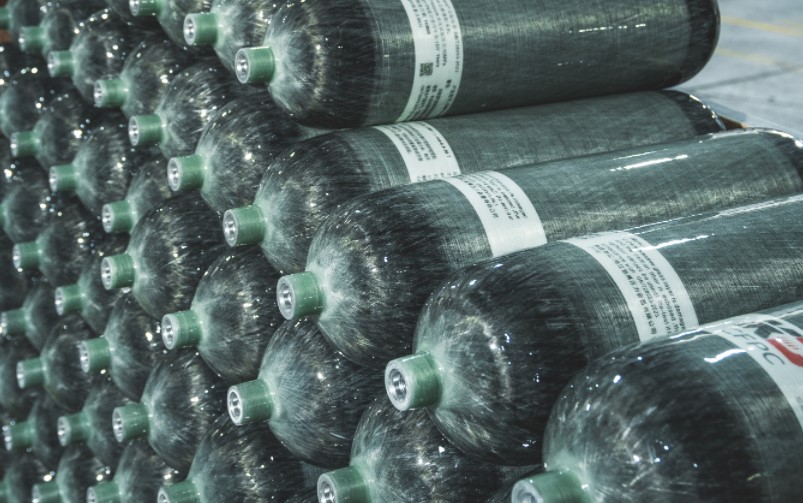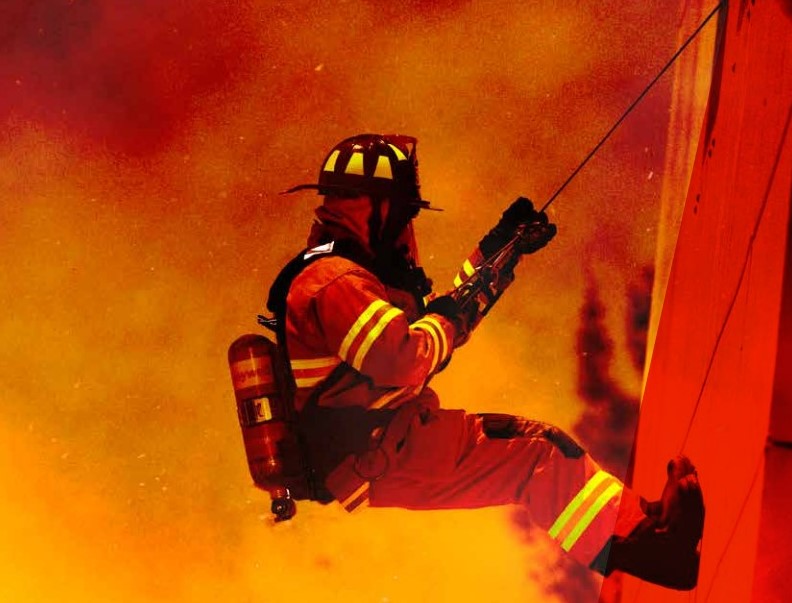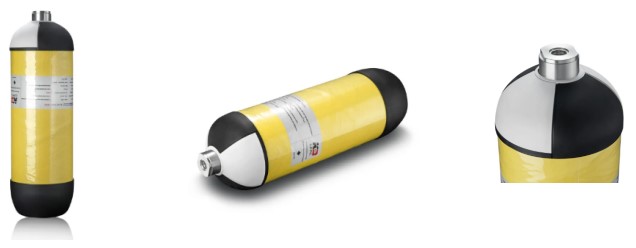Self-Contained Breathing Apparatus (SCBA) systems are essential for individuals working in hazardous environments where the air quality is compromised, such as firefighters, industrial workers, and rescue teams. A critical component of SCBA systems is the high-pressure cylinder that stores breathable air. In recent years, carbon fiber cylinders have gained prominence due to their superior properties compared to traditional steel cylinders. This article explores the role of carbon fiber cylinders in modern SCBA systems, the safety standards governing their use, and their advantages over steel cylinders.
The Role of Carbon Fiber Cylinders in Modern SCBA Systems
Carbon fiber cylinders play a pivotal role in enhancing the performance of SCBA systems. Their primary function is to store compressed air at high pressures, typically between 2,200 to 4,500 psi, allowing users to breathe in environments with harmful substances or insufficient oxygen. The development of carbon fiber technology has revolutionized the design and functionality of these cylinders, making them lighter and more durable.
Lightweight and Durable Design
The primary advantage of carbon fiber cylinders lies in their lightweight construction. Carbon fiber is a composite material composed of carbon atoms bonded together in a crystalline structure, which provides exceptional strength while being significantly lighter than traditional materials. This lightweight nature reduces the overall weight of the SCBA system, enhancing the mobility and endurance of the user. In hazardous situations, such as firefighting, the ability to move quickly and efficiently can be the difference between life and death.
Furthermore, carbon fiber cylinders offer unparalleled durability. The composite material is highly resistant to physical impact, corrosion, and environmental stressors, making it ideal for use in extreme conditions. This durability ensures that the cylinders maintain their structural integrity over time, reducing the risk of failure during critical operations.
Advancements in Cylinder Technology
Recent advancements in carbon fiber cylinder technology have further improved SCBA performance. Innovations such as advanced resin systems and optimized fiber orientations have enhanced the strength and fatigue resistance of the cylinders. These improvements allow for higher pressure ratings and longer service life, providing users with more air supply and reducing the need for frequent cylinder replacements.
Additionally, manufacturers have developed smart carbon fiber cylinders equipped with sensors that monitor air pressure, temperature, and usage data. This integration of technology allows for real-time monitoring and alerts, enabling users to make informed decisions and enhancing overall safety during operations.
Safety Standards and Testing Protocols for Carbon Fiber SCBA Cylinders
Given the critical role of carbon fiber cylinders in SCBA systems, ensuring their safety and reliability is paramount. Various international and national standards govern the manufacturing, testing, and certification of these cylinders to ensure they meet stringent safety requirements.
DOT, NFPA, and EN Certifications
In the United States, the Department of Transportation (DOT) regulates the transportation and usage of high-pressure cylinders, including those used in SCBA systems. DOT standards, outlined in regulations such as 49 CFR 180.205, specify the design, construction, and testing requirements for carbon fiber cylinders to ensure they can withstand high-pressure conditions safely.
The National Fire Protection Association (NFPA) also plays a crucial role in establishing safety standards for SCBA systems used by firefighters and emergency responders. The NFPA 1981 standard outlines the performance requirements for SCBA equipment, including carbon fiber cylinders, to ensure they provide adequate protection and functionality in firefighting operations.
In Europe, the European Committee for Standardization (CEN) establishes standards such as EN 12245, which governs the periodic inspection and testing of composite gas cylinders. These standards ensure that carbon fiber cylinders meet the necessary safety and performance criteria for use in various industrial and emergency applications.
Rigorous Testing Protocols
To comply with these standards, carbon fiber cylinders undergo rigorous testing protocols. One of the primary tests is hydrostatic testing, where the cylinder is filled with water and pressurized beyond its normal operating pressure to check for leaks, deformation, or structural weaknesses. This test is typically conducted every five years to ensure the cylinder’s integrity over its lifespan.
Visual inspections are also critical for detecting external and internal damage, such as cracks, corrosion, or abrasions, that could compromise the cylinder’s safety. These inspections often involve the use of borescopes and other specialized tools to examine the interior surfaces of the cylinder.
In addition to these standard tests, manufacturers may perform additional assessments, such as drop tests and environmental exposure tests, to evaluate the cylinder’s performance under various conditions. By adhering to these stringent testing protocols, carbon fiber cylinders are certified for safe use in SCBA systems.
Advantages of Carbon Fiber Cylinders over Steel Cylinders in SCBA Applications
While traditional steel cylinders have been widely used in SCBA systems for decades, carbon fiber cylinders offer several distinct advantages that have led to their increasing adoption across various industries.
Reduced Weight
The most significant advantage of carbon fiber cylinders over steel cylinders is their reduced weight. Carbon fiber cylinders can be up to 50% lighter than steel cylinders, significantly reducing the overall burden on the user. This reduction in weight is particularly beneficial for firefighters and emergency responders, who often operate in high-stress environments where agility and endurance are crucial.
Increased Strength and Durability
Carbon fiber cylinders boast superior strength and durability compared to steel cylinders. The composite material’s high tensile strength allows it to withstand higher pressure ratings, providing users with more air capacity and extended usage times. Additionally, carbon fiber’s resistance to corrosion and environmental degradation ensures that the cylinders maintain their performance in harsh conditions.
Enhanced Resistance to Environmental Stress
Unlike steel cylinders, which are prone to rust and corrosion over time, carbon fiber cylinders are highly resistant to environmental stressors such as moisture, chemicals, and UV radiation. This enhanced resistance not only extends the cylinder’s lifespan but also reduces the risk of failure during critical operations, enhancing user safety.
Cost-Effectiveness
While the initial cost of carbon fiber cylinders may be higher than that of steel cylinders, their extended service life and reduced maintenance requirements often make them a more cost-effective solution in the long run. The need for fewer replacements and repairs can lead to significant cost savings for organizations using SCBA systems.
Conclusion
Carbon fiber cylinders have become a cornerstone of modern SCBA systems, offering numerous advantages over traditional steel cylinders. Their lightweight, durable, and corrosion-resistant nature enhances the safety and mobility of users in hazardous environments, while advancements in technology continue to improve their performance. By adhering to stringent safety standards and testing protocols, carbon fiber cylinders ensure reliability and protection in critical situations. As industries and emergency services continue to prioritize safety and efficiency, the adoption of carbon fiber cylinders in SCBA systems is set to grow, solidifying their role as an essential component of life-saving equipment.
Post time: Jul-30-2024



